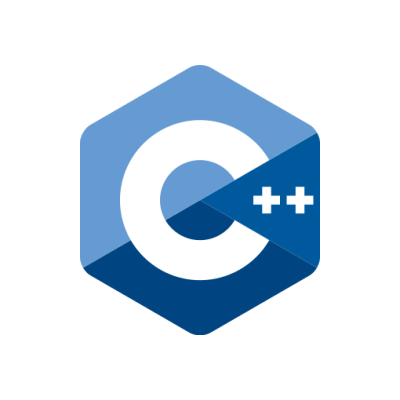Top 4 Programming Languages for IoT Development
IoT startups serve various purposes such as increased performance, security, comfort, and entertainment. However, implementing IoT projects requires a mix of skills, knowledge, and technologies, including hardware, software, cloud computing, networking, and analytics.
Of course, a key element of anу IoT solution is to pick an appropriate programming language that ensures the interaction between IoT devices and apps, processing, data storage, task execution, and user interaction.

What Should You Consider Before Picking a Programming Language for the IoT Project?
There are several factors like hardware compatibility, performance level, software availability, user-friendliness, stability, security, community support, and documentation.
For example, different IoT sensors can be easily integrated using network protocols such as Zigbee, increasing the efficiency of data transmission and processing. JavaScript can serve as the primary language for IoT connectivity and interaction.
Cloud computing platforms accelerate the operation of IoT devices through optimized access and data transfer. PHP stands out among cloud computing due to its availability and versatility in data management.
It’s also required to mention machine learning and analytics that provide deep insights for development. Python is a leader in machine learning due to its adaptability and dynamic capabilities.
Using various Internet of Things programming languages, developers simplify processes, reducing the time and cost of an IoT solution. C++ is emerging as the technology of choice for cost-effective and time-sensitive IoT solutions.
Top 4 Programming Languages for IoT to Choose From
To help you decide, here is a list of the best programming languages for IoT solutions with their main pros and cons.
1. Python

Python has a simple syntax and exceptional code readability, making it an ideal choice for object-oriented, structured and functional programming. This quality makes it perfect for IoT applications that require accurate data analysis.
Additionally, Python offers other attractive benefits, including full integration with other Internet of Things programming languages such as Java and C++, a comprehensive library ecosystem, and cross-platform compatibility including Linux and Windows.
Python is often chosen for IoT solutions because:
- It’s user-friendly and accessible. Particularly useful for beginners as Python’s simplicity allows it to be learned quickly.
- Python has active media communities. A fast-paced, engaged group of developers that are ready to provide support 24/7.
- It has a large number of frameworks, tools, and libraries like SciPy, TensorFlow, and others.
- It offers included data analysis and visualization tools. Python provides a bunch of tools that support efficient processing of IoT data.
On the other hand, it’s necessary to mention:
- Limitations in Python’s interpretation and dynamic text input may result in reduced speed or performance compared to other languages.
- Compatibility issues. Developers can face some challenges with devices or apps lacking support for Python or its frameworks.
2. JavaScript

In the IoT sector, JavaScript acts as a universal programming language that serves both internal and external processes. Advantages include a low entry barrier and a large pool of dedicated programmers.
JavaScript is ideal for event-driven architectures and allows projects to scale while optimizing resource consumption (memory, RAM, or CPU). For example, Cedalo offers a solution (MQTT broker) that utilizes only 15-20% of CPU and RAM power of comparable products.
A particular advantage is JavaScript’s ability to create dynamic interfaces, which allows developers to create functional layouts for different devices that support different types of sensors, e.g. String, Numeric, etc.
The JSON format allows developers to accurately describe device interface elements for web or mobile platforms using a structured data approach.
Why do developers choose JavaScript?
- Fast to learn and utilize. Especially useful for engineers familiar with front-end development.
- Community support. Benefit from an engaged community that offers help and feedback.
- Large number of libraries and frameworks. Access various functions and features via libraries such as Node.js, Express.js, MQTT.js, Johnny-Five.js, etc.
- Seamless communication. JavaScript makes it easy to communicate with web servers and cloud solutions via HTTP, WebSocket, or RESTful API.
Before picking JavaScript as a primary language for the IoT solution, consider this disadvantages:
- Performance limitation. In some situations, JavaScript’s dynamic typing may result in reduced speed or efficiency due to other languages.
- Compatibility issues. Platforms or devices that aren’t compatible with JavaScript or libraries may experience existing some issues.
3. C/C++

C/C++ remains one of the most effective Internet of Things programming languages due to its high performance, portability between different systems or microcontrollers and a wide range of pre-existing libraries.
Leveraging the power of C/C++, developers have widely adopted these languages into IoT projects. By using official frameworks, IoT developers can maximize connected system development capabilities and improve device performance.
The primary advantages are:
- Speed and efficiency. Improved performance and extended battery life of the device, especially useful for low-cost ones.
- Low-level feature support improves the capacity of the device. For example, cameras or sensors, which already run their own small scripts.
- Active community. Take advantage of a worldwide and engaged community that offers help and can provide feedback on any case or issue.
- Large number of frameworks. Access to a wide range of functions and capabilities on platforms, for example, Mbed OS, Zephyr OS, and others.
Of course, there are several disadvantages of choosing C++ for the IoT solution:
- Steep learning curve. Due to its complexity, C++ poses challenges for developers who have just started their career path.
- Complex syntax. Its verbosity can affect the efficiency of reading and writing.
- Limited built-in safety features. Compared to other languages, C/C++ may offer fewer pre-built security options, potentially increasing the chance of mistakes or bugs.
4. Java

Java‘s popularity in IoT is largely due to its exceptional portability. Using the Write Once Run Anywhere principle, Java developers can write code on their PCs and easily deploy it to various environments (smartphones, servers, etc.) via the Java Virtual Machine.
In IoT applications, Java, as the Internet of Things programming language, is widely used to create connected systems. Its object-oriented nature, minimal hardware dependency and extensive library support make it the first choice for IoT solutions.
For example, let’s discuss the Pub-Sub model, a communication service that is widely integrated into serverless and microservices architectures to facilitate asynchronous service-to-service interactions. Of course, it’s compatible with various programming languages, but most developers choose Java for microservice.
The benefits of utilizing Java in IoT projects include:
- Compatibility. Java can be easily integrated into various IoT devices and platforms like Raspberry Pi, Android, and others.
- Active Community. Take advantage of a wide and engaged community that offers reliable help in case of any trouble.
- Large number of libraries and frameworks. Access a wide range of functions and capabilities for IoT projects thanks to a wide range of Java libraries.
- Security features. Java offers a lot of built-in safety features that defend against viruses, malware attacks, and other threats.
However, the drawbacks of using Java in IoT projects are:
- Resource intensive. Java may need more storage and resources compared to some other languages, potentially impacting performance on entry-level devices.
- Limited low-level support. Some devices that require low-level or hardware features can’t be fully supported by Java.
- Low performance. In some scenarios, Java may not match the speed and performance of other languages.
Wrap Up
As you can see, there are several languages that are suitable for developing IoT solutions in 2024. However, to choose the one that fits your project best, it’s better to carefully consider goals and requirements beforehand.
About the Author

Laurenz Dallinger – as an accomplished technology enthusiast, he has a strong interest in digital transformation, with a particular focus on IoT. As a valued member of the Cedalo team, the company behind the top MQTT broker, Laurenz is passionate about sharing his knowledge and ideas with developers seeking new and efficient ways of communicating with devices.






